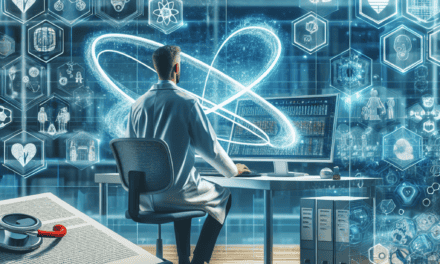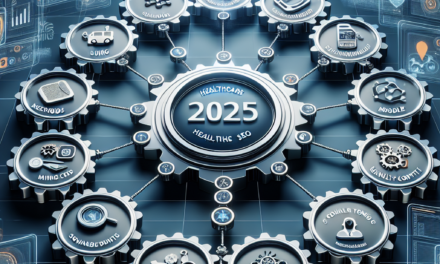NVIDIA GTC Highlights: AI Innovations in Imaging and Drug Discovery
The NVIDIA GPU Technology Conference (GTC) has become a pivotal event for showcasing advancements in artificial intelligence (AI), particularly in the fields of imaging and drug discovery. As AI continues to evolve, its applications in these sectors are transforming how we approach complex problems, from medical imaging to pharmaceutical development. This article delves into the highlights from the latest GTC, focusing on five key subtopics: AI in Medical Imaging, Generative AI for Drug Discovery, AI-Driven Imaging Technologies, Real-World Case Studies, and Future Trends in AI Innovations.
AI in Medical Imaging
Medical imaging has long been a cornerstone of diagnostics and treatment planning in healthcare. The integration of AI technologies is revolutionizing this field, enhancing the accuracy and efficiency of imaging processes.
At GTC, NVIDIA showcased several AI models designed to improve the interpretation of medical images. These models leverage deep learning algorithms to analyze images from various modalities, including MRI, CT scans, and X-rays. The ability of AI to detect anomalies with high precision is particularly noteworthy. For instance, studies have shown that AI can outperform radiologists in identifying certain conditions, such as lung cancer in chest X-rays.
- Deep Learning Algorithms: NVIDIA’s deep learning frameworks, such as Clara, are designed specifically for medical imaging. These frameworks enable the training of models on large datasets, allowing for improved accuracy in image analysis.
- Real-Time Analysis: AI can process images in real-time, providing immediate feedback to healthcare professionals. This capability is crucial in emergency settings where time is of the essence.
- Enhanced Image Quality: AI algorithms can enhance the quality of images, reducing noise and improving clarity. This is particularly beneficial in low-dose imaging, where radiation exposure is minimized.
One of the standout presentations at GTC was a case study involving the use of AI in detecting diabetic retinopathy. Researchers demonstrated how an AI model trained on thousands of retinal images could accurately identify early signs of the disease, leading to timely interventions and better patient outcomes. This example underscores the potential of AI to not only improve diagnostic accuracy but also to democratize access to quality healthcare by enabling remote diagnostics.
Moreover, the integration of AI in medical imaging is not without challenges. Issues such as data privacy, the need for large annotated datasets, and the potential for algorithmic bias must be addressed. However, the advancements presented at GTC indicate a promising future where AI can significantly enhance medical imaging capabilities.
Generative AI for Drug Discovery
The drug discovery process is notoriously lengthy and expensive, often taking over a decade and billions of dollars to bring a new drug to market. At GTC, NVIDIA highlighted how generative AI is poised to transform this landscape by accelerating the discovery of new compounds and optimizing existing ones.
Generative AI models, such as those based on reinforcement learning and generative adversarial networks (GANs), can simulate molecular interactions and predict the efficacy of new drug candidates. This capability allows researchers to explore vast chemical spaces quickly, identifying promising candidates that might have been overlooked in traditional screening processes.
- Accelerated Screening: Generative AI can analyze millions of compounds in a fraction of the time it would take using conventional methods. This speed is crucial in responding to urgent health crises, such as pandemics.
- Optimizing Drug Properties: AI can predict how changes in molecular structure affect drug properties, such as solubility and bioavailability. This predictive power enables researchers to design better drugs from the outset.
- Reducing Costs: By streamlining the discovery process, generative AI has the potential to significantly reduce the costs associated with drug development, making it more feasible for smaller biotech firms to innovate.
A notable example presented at GTC involved a collaboration between NVIDIA and a leading pharmaceutical company that utilized generative AI to identify a novel compound for treating a rare disease. The AI model was able to propose several candidates within weeks, a process that would typically take months or even years. This case illustrates the transformative potential of AI in drug discovery, enabling faster and more efficient development of life-saving medications.
Despite these advancements, the integration of generative AI into drug discovery is still in its infancy. Regulatory hurdles, the need for robust validation processes, and ethical considerations surrounding AI-generated compounds must be navigated carefully. Nevertheless, the innovations showcased at GTC signal a shift towards a more AI-driven approach in pharmaceutical research.
AI-Driven Imaging Technologies
The advancements in imaging technologies powered by AI are not limited to medical applications. Industries such as agriculture, manufacturing, and autonomous vehicles are also leveraging AI-driven imaging solutions to enhance operational efficiency and decision-making.
NVIDIA’s GTC highlighted several innovative imaging technologies that utilize AI for various applications. For instance, in agriculture, AI-powered drones equipped with imaging sensors can monitor crop health, assess soil conditions, and optimize irrigation practices. These technologies enable farmers to make data-driven decisions that enhance yield and sustainability.
- Precision Agriculture: AI imaging technologies can analyze satellite and drone imagery to provide insights into crop health, pest infestations, and nutrient deficiencies. This information allows for targeted interventions, reducing waste and increasing productivity.
- Quality Control in Manufacturing: In manufacturing, AI-driven imaging systems can inspect products for defects in real-time. This capability ensures higher quality standards and reduces the costs associated with returns and rework.
- Autonomous Vehicles: AI imaging technologies are critical for the development of self-driving cars. These vehicles rely on advanced imaging systems to perceive their environment, detect obstacles, and navigate safely.
A case study presented at GTC involved a partnership between NVIDIA and a leading agricultural technology firm that utilized AI imaging to monitor crop health across thousands of acres. By analyzing drone-captured images, the AI system was able to identify areas requiring attention, leading to a significant increase in crop yield and a reduction in resource usage.
As industries continue to adopt AI-driven imaging technologies, the potential for innovation is vast. However, challenges such as data integration, the need for high-quality training datasets, and the ethical implications of surveillance must be addressed. The advancements showcased at GTC indicate a future where AI imaging technologies will play a crucial role in various sectors, driving efficiency and sustainability.
Real-World Case Studies
To illustrate the practical applications of AI innovations in imaging and drug discovery, GTC featured several compelling case studies that highlight the transformative impact of these technologies.
One notable case study involved a collaboration between NVIDIA and a healthcare provider that implemented AI-driven imaging solutions to enhance diagnostic accuracy in radiology. By integrating AI algorithms into their imaging workflow, the healthcare provider reported a significant reduction in diagnostic errors and improved patient outcomes. The AI system was able to flag potential issues in images, allowing radiologists to focus on critical cases and make more informed decisions.
- AI in Oncology: Another case study focused on the use of AI in oncology, where researchers developed a model to analyze pathology images for cancer detection. The AI system demonstrated a higher sensitivity and specificity compared to traditional methods, leading to earlier detection and better treatment planning.
- Drug Discovery Success: A pharmaceutical company shared its success story of using generative AI to identify a new drug candidate for a complex disease. The AI model was able to propose several viable compounds, which were subsequently validated in preclinical studies, significantly shortening the timeline for drug development.
- AI in Agriculture: A case study in precision agriculture showcased how AI imaging technologies helped farmers optimize their irrigation practices. By analyzing satellite imagery, farmers were able to identify areas of their fields that required more water, leading to improved crop health and reduced water usage.
These case studies underscore the real-world impact of AI innovations in imaging and drug discovery. They demonstrate how organizations across various sectors are leveraging AI to enhance efficiency, improve outcomes, and drive innovation. As more success stories emerge, the adoption of AI technologies is likely to accelerate, further transforming these fields.
Future Trends in AI Innovations
The future of AI innovations in imaging and drug discovery is bright, with several emerging trends poised to shape the landscape in the coming years. At GTC, industry leaders discussed key trends that are likely to influence the direction of AI technologies.
One significant trend is the increasing integration of AI with other advanced technologies, such as blockchain and the Internet of Things (IoT). This convergence has the potential to enhance data security, improve traceability in drug supply chains, and enable real-time monitoring of health conditions through connected devices.
- Personalized Medicine: The shift towards personalized medicine is another trend gaining momentum. AI can analyze genetic data alongside imaging and clinical information to tailor treatments to individual patients, improving efficacy and reducing adverse effects.
- AI Ethics and Regulation: As AI technologies become more prevalent, discussions around ethics and regulation are intensifying. Ensuring that AI systems are transparent, fair, and accountable will be crucial in building trust among users and stakeholders.
- Collaborative AI: The future may also see the rise of collaborative AI systems that work alongside human experts. These systems can augment human decision-making, providing insights and recommendations while allowing professionals to retain ultimate control.
Moreover, advancements in hardware, such as NVIDIA’s latest GPUs, will continue to drive the performance of AI models, enabling more complex analyses and faster processing times. As computational power increases, the potential applications of AI in imaging and drug discovery will expand, opening new avenues for research and innovation.
In conclusion, the highlights from NVIDIA’s GTC underscore the transformative potential of AI innovations in imaging and drug discovery. From enhancing diagnostic accuracy in healthcare to accelerating drug development processes, AI is reshaping these fields in profound ways. As organizations continue to adopt and integrate these technologies, the future promises even greater advancements that will improve outcomes and drive efficiency across various sectors.
Conclusion
The NVIDIA GTC has once again demonstrated the incredible potential of AI innovations in imaging and drug discovery. Through advancements in deep learning algorithms, generative AI, and real-world applications, the conference highlighted how these technologies are revolutionizing healthcare and other industries. The case studies presented illustrate the tangible benefits of AI, from improved diagnostic accuracy to accelerated drug development timelines.
As we look to the future, the trends emerging from GTC indicate a continued evolution of AI technologies, with a focus on personalized medicine, ethical considerations, and collaborative systems. The integration of AI with other advanced technologies will further enhance its impact, driving innovation and improving outcomes across various sectors.
In summary, the insights gained from NVIDIA’s GTC serve as a reminder of the transformative power of AI. As we continue to explore its potential, the possibilities for improving healthcare, enhancing drug discovery, and driving efficiency in various industries are limitless.





